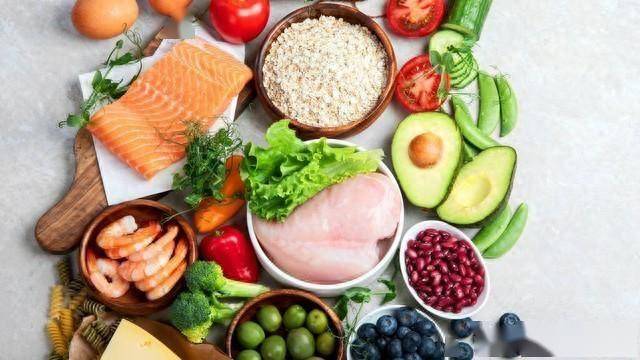Purine, the name may sound unfamiliar, but it is closely related to our daily diet. Many people know that animal organs are the “culprit” of high purine foods, but did you know? In fact, many vegetables we consider healthy “with beans” are the hidden purine assassins! Today, let’s uncover the true face of these purine assassins, help everyone eat scientifically, and avoid unnecessary health risks.
Purine, what is it? Why should we pay attention to it?
Purine is a chemical substance naturally present in many foods, and when purines are metabolized in the body, uric acid is produced. High levels of uric acid may lead to health issues such as gout, hyperuricemia, and more. Understanding purine and its impact on health is the basis of a scientific diet.
Purine Definition and Metabolism Process
Purine is an essential component of nucleic acids, metabolized in the body into uric acid. Most people can effectively excrete uric acid through the kidneys, but when there is excessive uric acid production or poor excretion, it can accumulate in the body, crystallize, and trigger gout attacks.
Harms of Hyperuricemia
Hyperuricemia is not just a precursor to gout attacks, but also closely related to various metabolic diseases such as hypertension, diabetes, obesity, and more. Prolonged hyperuricemia may also lead to serious health issues like kidney stones, renal insufficiency, etc.
Common High Purine Foods
In daily diet, some foods contain high purines, easily overlooked by many people. Common high purine foods include animal organs, seafood, and certain vegetables. Understanding these foods helps us better control uric acid levels.
Animal Organs
Liver, kidney, brain, and other animal organs are widely known as high purine foods, with purine levels reaching 150-300 milligrams per 100 grams. While these foods are nutritious, they should be avoided by people with high uric acid levels and gout patients as much as possible.
Seafood
Seafood like shrimp, crab, shellfish are also high purine foods, especially dried seafood like dried scallops, dried shrimp, have even higher purine content.
Certain Vegetables
Some vegetables such as spinach, asparagus, mushrooms also have high purine content. While harmless to the general population, individuals with high uric acid levels should consume them in moderation.
Beans-Containing Vegetables, Hidden Purine Assassins
In addition to the common high purine foods mentioned above, some “with beans” vegetables also harbor high purine risks. These vegetables are often considered healthy in daily diet but need special attention for individuals with high uric acid levels and gout patients.
Soybeans and Products
Soybeans and products like tofu, soy milk, dried tofu, are common plant-based protein sources, but they also have high purine content. The purine content of soybeans per 100 grams is about 100-150 milligrams, and should be consumed in moderation by individuals with high uric acid levels.
Mung Beans
Mung beans are considered good ingredients for clearing heat and detoxification, but their purine content per 100 grams is not low, about 50-75 milligrams. Individuals with high uric acid levels should control their intake to prevent elevated uric acid levels.
Red Beans
Red beans are rich in fiber and vitamins, part of a healthy diet, but they also have high purine content. Red beans contain about 50-70 milligrams of purine per 100 grams. For gout patients, foods like red bean porridge should be consumed in moderation.
Soybean Sprouts
Soybean sprouts, a popular low-calorie, high-fiber vegetable, also have a notable purine content. The purine content per 100 grams of soybean sprouts is about 50-60 milligrams. Individuals with high uric acid levels should consume them in moderation to avoid triggering gout.
How to Scientifically Control Purine Intake?
After understanding high purine foods, how can we scientifically control purine intake and reduce uric acid levels? Here are some practical dietary suggestions.
Control Intake of High Purine Foods
Try to reduce the intake of high purine foods such as animal organs, seafood, soybeans, and their products. Opt for foods with lower purine content like eggs, dairy products, fruits, and vegetables.
Stay Hydrated
Drinking plenty of water helps in uric acid excretion; it is recommended to consume more than 2000 milliliters of water daily. Choose plain water, light tea, and avoid sugary drinks.
Avoid Alcohol
Alcohol, especially beer, contains high purine, disrupts uric acid excretion, and increases the risk of gout attacks. Individuals with high uric acid levels are advised to avoid alcohol as much as possible.
Balanced Diet
Maintain a balanced diet structure, ensure adequate nutrient intake. Avoid overeating, incorporate moderate exercise, control weight, and promote overall health.
Other Considerations in Daily Life
Besides dietary control, daily habits also affect uric acid levels. Here are some considerations in daily life:
Maintain Good Sleep Habits
Regular sleep patterns help in normal bodily metabolism; ensure 7-8 hours of sleep daily and avoid staying up late.
Moderate Exercise
Moderate exercise helps promote metabolism and lower uric acid levels. It is recommended to engage in aerobic exercises like brisk walking, swimming, cycling 3-4 times a week.
Avoid High-Temperature Environments
High temperatures can lead to dehydration, affecting uric acid excretion. During hot summers, avoid prolonged sun exposure, stay hydrated, and maintain body fluid balance.
Purine assassins are not just animal organs; these “with beans” vegetables also hide high purine risks. Through scientific dietary control and good lifestyle habits, we can effectively reduce uric acid levels, prevent gout, and related diseases. Hope today’s sharing helps everyone better understand purine, adopt a healthy diet, and maintain a healthy body.


